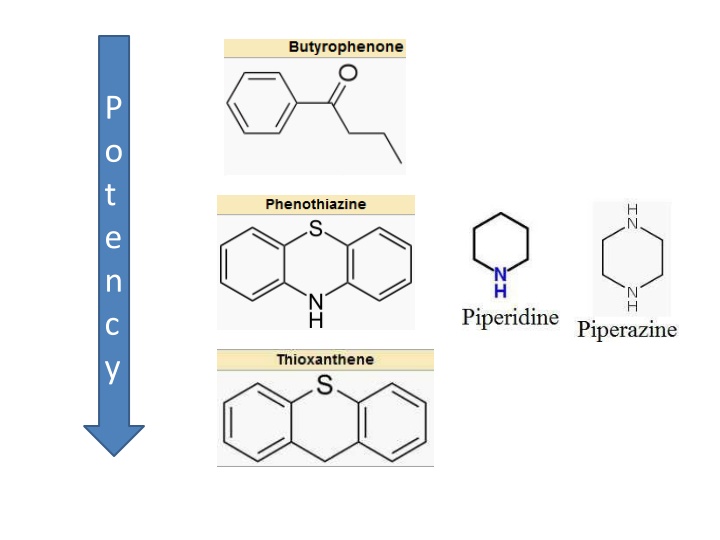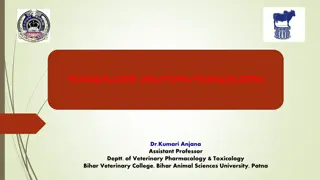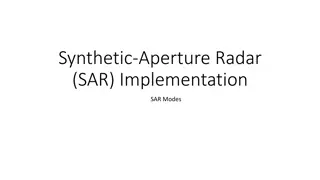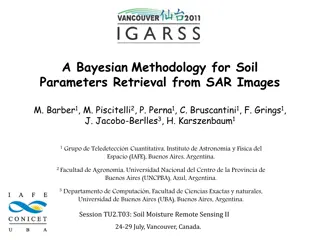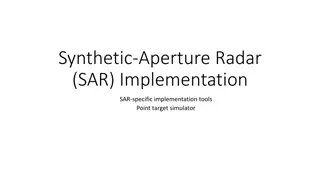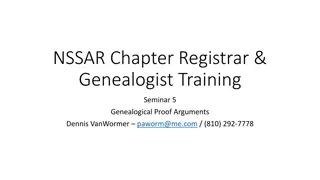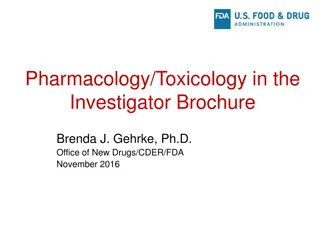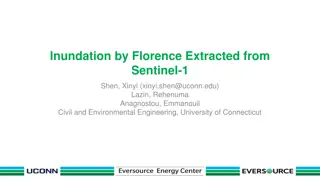SAR and Pharmacology of Phenothiazines
In this content, SAR of Phenothiazines is explored with details on structural requirements for activity. Key points include substitution patterns, amino substituent intensity, linker preferences, and pharmacological properties. Chlorpromazine, a well-known phenothiazine derivative, is discussed for its therapeutic uses and mechanism of action. Additionally, the synthesis of Chlorpromazine is outlined step by step.
Download Presentation

Please find below an Image/Link to download the presentation.
The content on the website is provided AS IS for your information and personal use only. It may not be sold, licensed, or shared on other websites without obtaining consent from the author.If you encounter any issues during the download, it is possible that the publisher has removed the file from their server.
You are allowed to download the files provided on this website for personal or commercial use, subject to the condition that they are used lawfully. All files are the property of their respective owners.
The content on the website is provided AS IS for your information and personal use only. It may not be sold, licensed, or shared on other websites without obtaining consent from the author.
E N D
Presentation Transcript
P o t e n c y
SAR of Phenothiazines 1) Unsubstituted Phenothiazines has no activity but has enough lipophilicity for good brain penetration. Substitution at C2 and N10 is required for activtiy
2) C2 must have an electrowithdrawing group. The activity for these various group is as X = - SO2NR2 > -CF3 > -CO-CH3 > -Cl
ElectronWithdrawing ElectronDonating
3) A terminal amino substituent must be present at N10. It can be piperazine, piperidine or aliphatic and their intensity could be ranked as follows: piperazine group >piperidine group > aliphatic chain
Esterification of the OH containing piperazine derivatives extensively increases the duration of action
4) There must be an linear (ie unbranched) alkyl linker between the core ring and the terminal amino ring those length is optimum at three methylene units ie CH2-CH2-CH2 Reduction of these carbon number changes receptoraffinity
Chlorpromazine It is a phenothiazine derivative used in treatment of schizophrenia. It was the first antiphycotic drug It s also used as antiemetic and againsthippcup Has high incidence of Extra Pyramidal side effects It s metabolite has strong antiadrenergic, weak anticholinergic and slight antihistaminergic and antiserotonergic properties (not parentmolecule) MOA: It antagonizes Dopamine D2 in the the Mesocortical and Mesolimbic pathway
Chlorpromazine synthesis H N Cl CH3 Cl CH2 CH2 CH2 N CH3 S 3-Chloropropyl-dimethylamine 2-Chlorophenothiazine Refulx in presence of toulene and sodamide CH3 CH2 CH2 CH2 N CH3 Cl N Chloropromazine S
R1 R2 R1 R2 Cis has R groups on same side of double bond Trans has R groups on opposite side of double bond Decide cis and trans in these compounds?
Flupenthixol It is a Thioxanthine derivative usedfor treatment of schizophrenia It can exist in cis and trans form and only cis is active because it mimics the conformation of Dopamine It s duration of actionis long (2-3 weeks) and hence useful in patients who have a poor compliance with medication MOA- It is nonselective and antagonizes both Dopamine D1 and D2 in the the Mesocortical and Mesolimbic pathway
Olanzapine It is an atypical drug used for treatmentof of schizophrenia and also used in bipolardisorder Olanzapine is a potent antagonist of the muscarinic M3 receptor and this has been linked to it s diabetic side effect It can cause heart failure, sudden death, orpneumonia when used in older adults suffering fromdementia MOA: It has low antagonist activity in Dopamine D2 receptor and primary action is believed to have occurred through inverse agonism at Serotonin 5HT2A and antagonism at adrenergicreceptors
Quetiapine It is a short-acting atypical antipsychotic usedfor the treatment of schizophrenia and bipolar disorder It is a dopamine, serotonin, and adrenergic antagonist, and a potent antihistamine with negligible anticholinergic properties. MOA: It has low antagonist activity inDopamine D2 receptor and primary action is believed to have occurred through antagonism at both Serotonin 5HT2A and adrenergicreceptors
